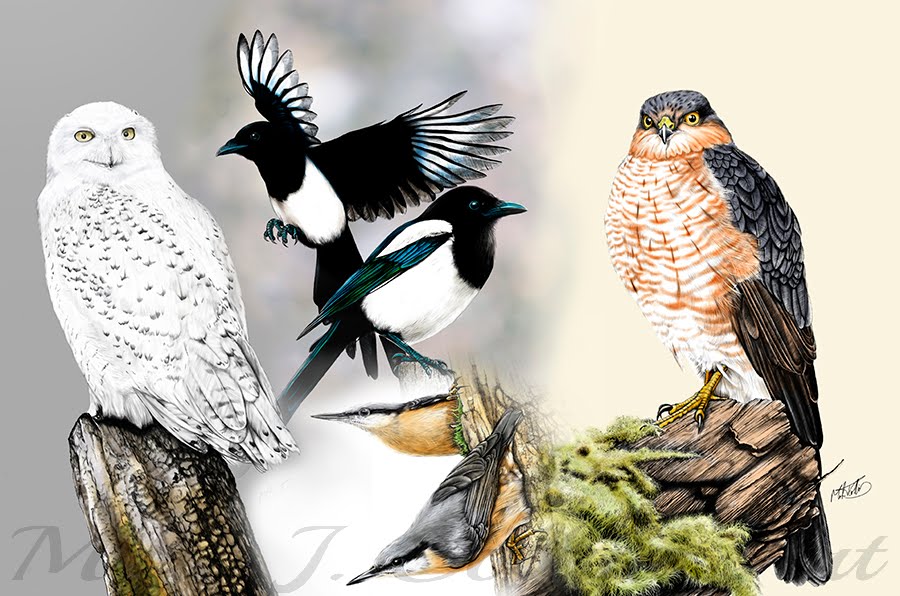I was digging through a bag of stuff today and came upon a sketch book from, I think, possibly 1985 or there about, perhaps 1986, it would have been my last year, or perhaps the previous one, at University in Cardiff Studying for an honours degree in art.
Anyway, it's full of field sketches, and brings back quite a few memories, not all of them good I must admit. To be honest, it was quite hard being an aspiring wildlife artist at University during a period when modernism was, as the art critic would say "in vogue".
I didn't always see eye to eye with my lecturers and tutors.
With hindsight, and a good few years under the expanding belt, I wish perhaps I'd been a little more receptive to their teachings, I seem to find little things they tried to tell me making more sense all these years on.
Never mind, I did manage to take on board enough to get a respectable degree, and I did learn a lot about drawing, or, to be more precise, seeing.
This page of sketches was made whilst watching the Great Crested Grebe's at Roath Park lake in Cardiff, and seeing it again after all these years makes me smile, theres little passages of drawing in there that I'd still be pleased with if I'd made them today, for example the little doodle of the chap on the bank flexing his wings.
That park featured a lot those three years, on my Sunday mornings in particular. There were always Mute Swans, Grebes, Mallards, and both Greylag and Canada Geese to watch and draw, and with Cardiff being coastal, a variety of Gulls too.
The first time I ever saw a Great Crested Grebe was with my Uncle David, on a trip to Coate Water park in Swindon when I was perhaps 10 or 11 years old.
I was fascinated by them, then and I still am now, they're such an odd mix of elegance and gawk, and I still find those oddly tense moments watching and waiting to see where they will pop up from a dive quite magical.






